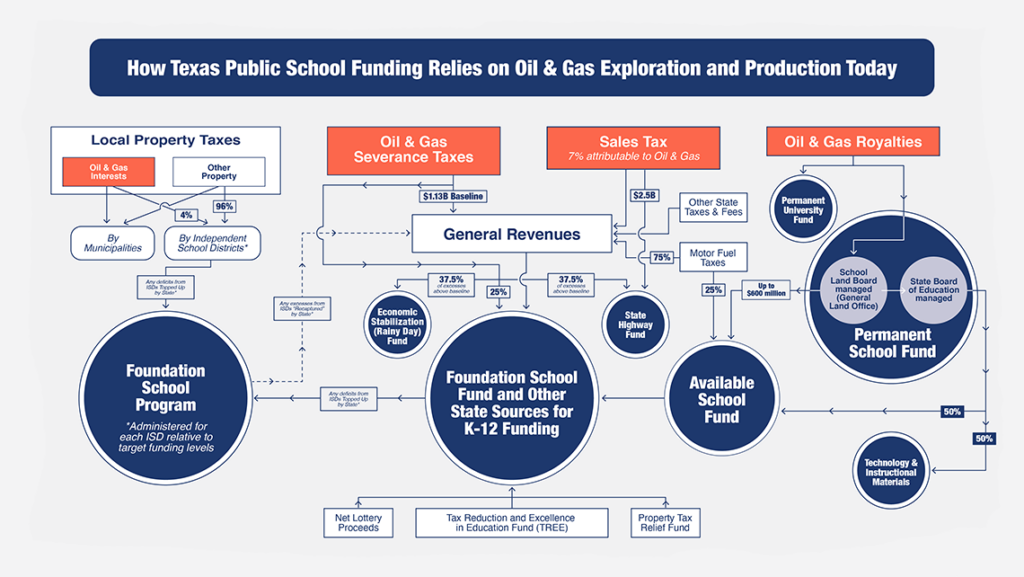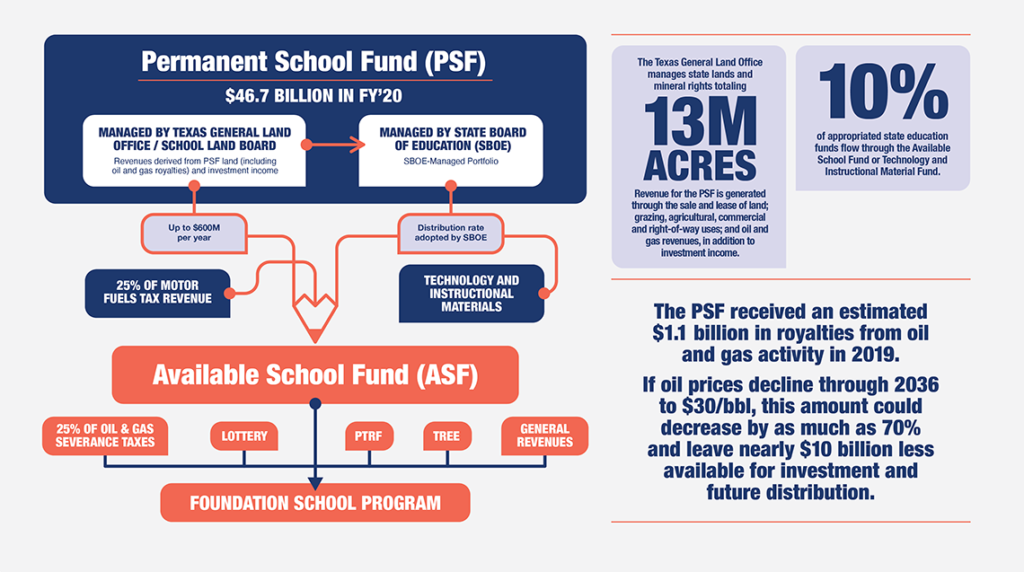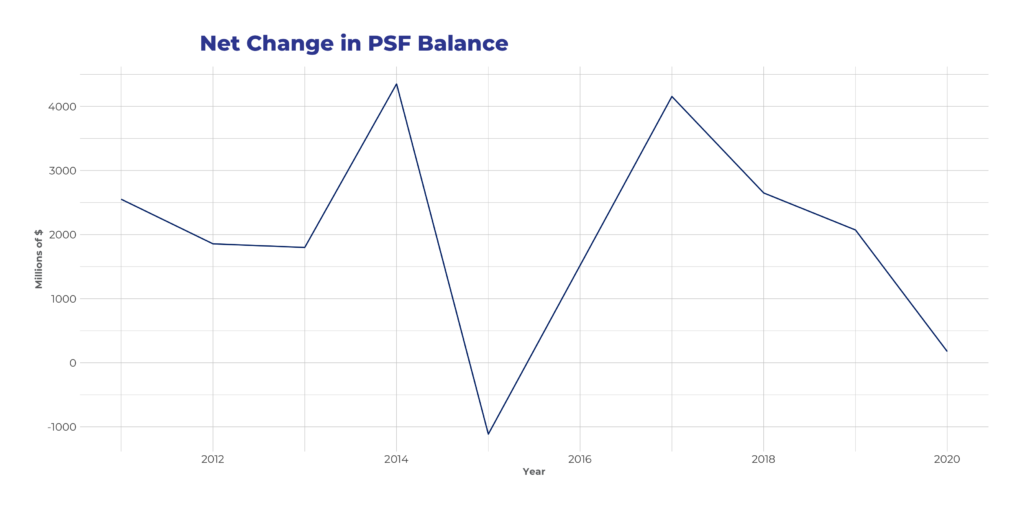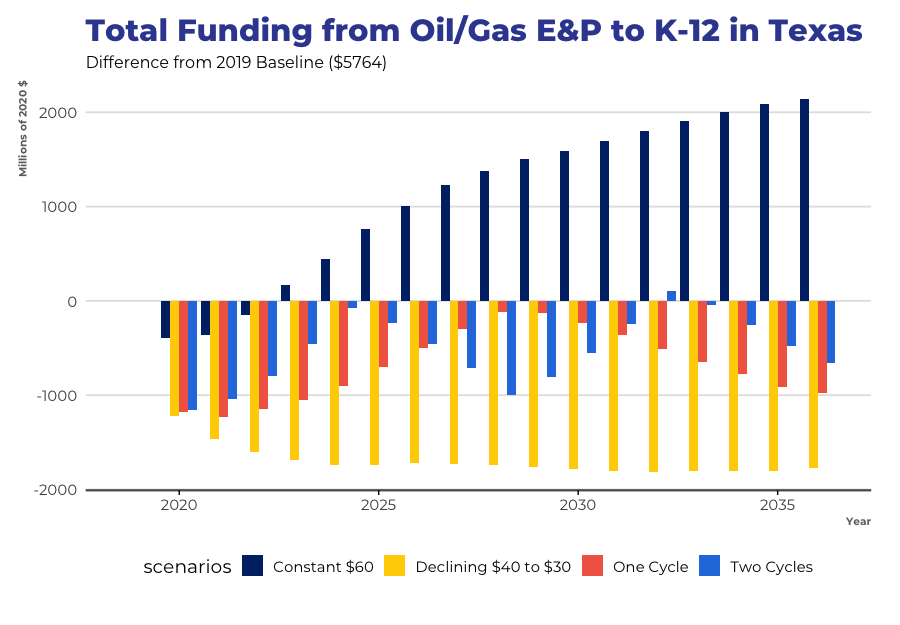Education in Texas is funded by two main sources: local property taxes and the state. Currently, local property owners foot about 64 percent of the bill, according to the Texas Comptroller. But skyrocketing property taxes and the challenge of equitable distribution have homeowners and schools crying out for relief. At the same time, the state’s education fund is increasingly vulnerable to volatile global markets.


The Texas Permanent School Fund is a $46.7 billion endowment designated for the benefit of public schools in Texas. Run by the State Board of Education and the General Land Office, the fund pays for things like textbooks for schoolchildren and guarantees bonds issued by local school districts.

Because the fund is heavily invested in land and oil markets, the value fluctuates dramatically, and often unpredictably.

New research by Center for Houston’s Future found that approximately 20% of Texas public school funding can be linked to the oil and gas industry, and under four realistic oil pricing scenarios developed by industry experts, state and local governments could see annual revenues and royalties from Texas oil and gas revenue decline from 2019 totals by as much as 73% – $9.7 billion per year – by 2036, the state’s bicentennial.

If oil and gas prices steadily decline – Texas schools could experience a 30% ($1.7 billion) decline in annual tax revenues and royalties from 2019 levels by 2036. Local property taxes are also at risk. In 2019, Texas school districts collected an estimated $1.5 billion in property taxes from the oil and gas industry, but under three out of four scenarios, this may soon begin to decline.
We cannot afford to gamble our children’s education on oil futures.
Thankfully, we don’t have to.
To future-proof Texas school funding against risks associated with oil and gas market volatility, the legislature should consider:
- Streamlining the management of the PSF to protect the fund and maximize future distributions;
- Increasing the targeted return on investment for the state’s “rainy day” fund, the Economic Stabilization Fund (ESF);
- Improving the state’s long-term revenue forecasting process; and
- Diversifying the state’s tax base.
As Texans, our greatest resource is our people – and our most valuable investment is in our children’s education. We need to protect that investment by strengthening and diversifying school funding to protect it against unexpected events and economic downturns. We simply can’t afford not to.
